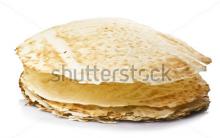Lecture number 9
The relationship between structure and biological action
Pyridine: highly toxic substance. Has a lone pair of electrons, a tertiary nitrogen atom, has strong basic properties
Dihydropyridine: a coronary dilator
Pyridine-3-carboxylic acid: antipellagric agent
Pyridine-4-carboxylic acid: anti-tuberculosis
derivatives of pyridine methanol have vitamin B 6 activity.
Medicinal substances derivatives of pyridine methanol
Pyridoxine Hydrochloride
Methyl 3-hydroxy-4,5 dioxymethyl-pyridine hydrochloride
Vitamin B 6 is an odorless, white, fine-crystalline powder with a bitter-sour taste. T pl. - 204 - 206 ° C (with decomposition). Easily soluble in water, difficult - in alcohol and acetone.
Pyridoxalphosphate
Phosphoric ester of 2-methyl-3-hydroxy 4-fornyl 5-hydroxymethyl pyridine.
Physical properties: Light yellow crystalline powder. Slightly soluble in water, unstable in light.
Emoxуpine
Ethyl 3-hydroxy-6-methyl-pyridine hydrochloride
Physical properties: white, odorless fine crystalline powder. Let's easily dissolve in water.
Authenticity:
General reactions
Reaction with 2,6 - dichloroquinonechlorimide - a blue indophenol dye is formed
3. Reaction of azo dye formation (all drugs). Reaction to phenolic hydroxyl.
4. Reaction with FeCl 3 to phenolic hydroxyl
Reaction with general alkaloid reagents (silicotungstic and phosphotungstic acids form white precipitates).
Differentiation reactions
1. Pyridoxine hydrochloride and Emoxipin react for Cl -.
HCl + AgNO 3 AgCl + HNO 3
2. Pyridoxal phosphate contains an aldehyde group, which is found:
A - reaction with Felling's reagent 1 and 2
B- reaction with ammonia solution of silver nitrate
Pyridoxal phosphate, after hydrolysis, gives a reaction to phosphoric acid. A yellow silver phosphate precipitate is formed.
H 3 PO 4 + 3AgNO 3 Ag 3 PO 4 + 3HPO 4
Pyridoxine hydrochloride exhibits blue fluorescence in UV light
5. Spectrophotometric method (for all preparations). The UV spectrum of the test substance is recorded. The UV spectrum of the standard substance is recorded. They must be identical.
quantitation
For pyridoxine hydrochloride and emoxypine
Non-aqueous titration method
Method: direct titration
The method is based on the reaction of acid-base interaction in a non-aqueous medium
Medium: glacial acetic acid, add Hg (CH 3 COO) 2 - to bind the hydrochloric acid released during titration
Chemism
R 3 N · HCl + HClO 4 R 3 NH · ClO 4 + HCl
HCl + Hg (CH 3 COO) 2 → HgCl 2 + CH 3 COOH
Pyridoxal phosphate
Spectrophotometric in the UV region, through a standard solution.
Alkalimetric method
Direct titration method for phosphoric acid residue. The method is based on the reaction of acid-base interaction.
Argentometry
Mercury and Mercury
Application
Pyridoxine 0.02 and 0.1 g
Pyridoxal phosphate 0.01- 0.02 g for toxicosis in pregnant women, various types of parkinsonism, pellagra and chronic hepatitis
Emoxipin is an antioxidant, has angioprotective activity.
Available in the form of a 3% solution of 5 ml in ampoules.
Pyricarbate (Prodectin) 2,6-pyridine dimethanol, bismethyl carbamate
Physical properties: white crystalline powder, odorless. Poorly soluble in water.
T melt \u003d 137 - 140 о С
Authenticity
1.With acetic anhydrin in the presence of citric acid when not heated → yellow color, turning into cherry red.
Reaction to the pyridine ring with 2,4 - dinitrochlorobenzene. A pyridine dye is formed.
Alkaline hydrolysis is carried out. Methylamine is liberated. Red litmus paper turns blue.
| parmidin |
UV and IR spectroscopy methods
A. UV spectroscopy method.
The UV spectrum of the test substance is recorded.
The UV spectrum of a standard substance is recorded. They must be identical.
In UV spectroscopy, electromagnetic radiation is absorbed by the electrons of the entire molecule, and on the spectrogram we observe one maximum of light absorption.
λ, nm
B. Method of IR spectroscopy.
quantitation
Non-aqueous titration method
Method: direct titration
Dihydropyridine derivatives
Nifedipine (Corinfar)
2,6-dimethyl-4- (2 / -nitrophenyl) - 1,4-Dihydro-pyridine -3,5-dicarboxylic acid dimethyl ester
Physical properties: greenish-yellow crystalline powder. Practically insoluble in water, difficult in alcohol. Decomposes in the light. T melt \u003d 169-174 o C.
Authenticity
UV spectroscopy method
IR spectroscopy method
quantitation
Get chromatograms.
H, mm h, mm
t, min t, min
Authenticity
quantitation
Authenticity
UV and IR spectroscopy
2. reaction to aliphatic NH 2 - group with ninhydrin. A blue-violet color is formed.
quantitation
Lecture number 9
Medicinal substances derivatives of pyridine
Heterocyclic compounds such compounds are called, the cycles of which, in addition to carbon atoms, include atoms of other elements (N, O, S, etc.), called heteroatoms.
Heterocyclic compounds are divided into groups: 1) according to the number of atoms in the cycle, 2) according to the number of heteroatoms in the cycle; 3) compounds with condensed cycles.
Five-membered heterocyclic compounds with one heteroatom:
furan  pyrrole
pyrrole  thiophene
thiophene
Six-membered heterocyclic compounds with one heteroatom:
 pyridine
pyridine  α-pyran
α-pyran  γ-pyran
γ-pyran
Heterocyclic compounds with two heteroatoms:




pyrazole imidazole thiazole pyrimidine
Heterocycles with condensed nuclei:



indole quinoline chromone
 purine
purine
Heterocyclic compounds are widespread in nature, are part of vitamins, alkaloids, pigments, some amino acids, dyes, antibiotics, etc. Purine and pyrimidine bases are part of nucleic acids.
Properties of some heterocyclic compounds. Five-membered heterocycles.
Pyrrole (C 4 H 5 N), the core of which is a part of many important natural compounds: hemoglobin, chlorophyll, tryptophan (an essential amino acid), etc., is an oily liquid with the smell of chloroform. In air, pyrrole turns brown due to oxidation, dissolves well in alcohol and ether, but poorly in water. It is obtained by dry distillation of fat-free bones or synthetically, for example, from succinic acid.
With a concentrated KOH solution, pyrrole forms pyrrole-potassium, exhibiting acidic properties.
 + H 2 O
+ H 2 O
Under the action of mineral acids, pyrrole undergoes polymerization.
Reduction of pyrrole produces pyrrolidine.
 + 2H 2
+ 2H 2 
Pyrrolidine is a part of amino acids:
proline  hydroxyproline
hydroxyproline 
Biologically active derivatives of pyrrole - hemoglobin and chlorophyll.
Hemoglobin – it is a complex protein consisting of a protein component and a non-protein part - heme, which includes pyrrole nuclei - a polycyclic system containing four pyrrole nuclei - porphin.
Porfin, having a Fe 2+ ion in the center is colored red, upon heat treatment forms a Fe 3+ ion and turns gray.
Chlorophyll – a green plant pigment containing a porphin core that is bound to Mg 2+. Chlorophyll takes part in the formation of organic compounds from CO 2 and H 2 O.
Oxygenated heterocyclic compounds.
Furan - - colorless liquid, soluble in water. The furan nucleus is found in furanose forms of carbohydrates (for example, ribose). The most important derivative of furan is furfural.


ribose furfural
Furfural - oily liquid with a pungent odor, in small concentrations it smells like rye bread. It is used for the production of nylon fiber, solvents, antiseptic agents, fungicides.
Compounds condensed with other cycles.
Benzopyrrole (indole) is a crystalline substance, in small concentrations it has the smell of jasmine, in the essential oil of which it is contained, in large concentrations it has a disgusting smell. In terms of chemical properties, indole is similar to pyrrole. The indole nucleus is found in heteroauxin (plant growth hormone), tryptophan (an essential amino acid), indigo (dye), and other compounds.
Six-membered heterocyclic compounds(oxygenated heterocyclic compounds).
Piran (α- and γ-) is an unstable substance, its derivatives are widespread in nature, γ-Piran and benzopyran (chromone) form the basis of the molecules of plant dyes and tannins - flavones, anthocyanins and catechins.
Flavones are yellow plant pigments (in flowers, fruits) and are found in plants in the form of glycosides.
 flavone
flavone
Anthocyanins and catechins are very similar in structure to flavones. Anthocyanins are also plant pigments, their color varies from blue to purple. The color of the anthocyanin solution changes depending on the pH of the medium (in an acidic medium - red, in an alkaline medium - gray).
Flavones and anthocyanins are ginetically linked and are able to transform one into another.

flavone, quercetin anthocyanin, cyanidin
(yellow) chloride (red)

Catechins possess tanning properties (tea, hops, bird cherry, etc.), prevent the development of mold, being polyphenols.
Flavones, anthocyanins and catechins decompose, losing color and P-vitamin activity, under the influence of temperature and in the presence of metal ions (Fe 3+, Ag +, Cu 2+, etc.). СFeCl 3 give a dark color (qualitative reaction to phenolic hydroxyl).
Pyridine - colorless liquid with an unpleasant odor, readily soluble in water. It is obtained from coal tar and synthetically.
In reactions, pyridine exhibits basic properties:
C 5 H 5 N + HOH → OH - (pyridinium hydroxide);
C 5 H 5 N + HCl → Cl - (pyridinium chloride).
An aqueous solution of pyridine reacts with FeCl 3, forming iron hydroxide and pyridinium chloride
OH - + FeCl 3 → Fe (OH) 3 + 3Cl -
Reduction of pyridine produces piperidine:

Pyridine is resistant to oxidants, but side chains are oxidized upon oxidation of pyridine homologues.

β-picoline nicotinic acid
Nicotinic acid amide is a PP vitamin found in meat, potatoes, buckwheat, etc.
I AM  nuclei of pyridine and pyrrolidine form nicotine, which is contained in tobacco in the form of a salt of citric and malic acids; is a heart poison.
nuclei of pyridine and pyrrolidine form nicotine, which is contained in tobacco in the form of a salt of citric and malic acids; is a heart poison.
Derivatives of pyrimidine and purine.
Six-membered heterocycles with two heteroatoms -pyrimidine derivatives:



uracil (U) thymine (G) cytosine (C)
Fused heterocycles -purine derivatives.


adenine (A) guanine (G)
All these heterocyclic nitrogenous bases are part of nucleic acids, which play an extremely important role in the vital processes of organisms.
Nucleic acidsare polymers formed during the condensation of nucleotides - chemical compounds consisting of phosphoric acid residues, a carbohydrate component and one of the purine or pyrimidine bases. There are two types of nucleic acids. Deoxyribonucleic acid (DNA) contains deoxyribose as a carbohydrate component, and adenine, guanine, cytosine, and thymine are heterocyclic bases:

deoxyribose
R  ibonucleic acid (RNA) consists of the carbohydrate ribose and heterocyclic bases - adenine, guanine, cytosine, uracil.
ibonucleic acid (RNA) consists of the carbohydrate ribose and heterocyclic bases - adenine, guanine, cytosine, uracil.
RNA and DNA differ from each other not only in carbohydrates, but also in heterocyclic bases: ribonucleic acid contains uracil, and deoxyribonucleic acid contains thymine.
Polymerization of nucleotides occurs due to the formation of an ether bond between H 3 PO 4 of one nucleotide and the third hydroxyl of pentose:
nitrogenous base - sugar
residue H 3 PO 4
nitrogenous base - sugar
residue H 3 PO 4
Polynucleotide(DNA or RNA). The hereditary information of a cell is encoded by a specific sequence of bases in a DNA molecule, built in the form of an RNA double helix, and the sequence of nucleotides of one helix is, as it were, reflected in the other. RNA is formed in the form of a single helix.
HYDROCARBONS 8
Acyclic hydrocarbons 9
Alicyclic hydrocarbons 15
Aromatic hydrocarbons 17
Halogenated HYDROCARBONS 21
ORGANIC ELEMENTAL CONNECTIONS 22
ORGANIC ACIDS 33
OXYCIDS (HYDROXYACIDS) 39
Phosphatides 51
Stearins 54
CARBOHYDRATES 57
Monosaccharides 57
Disaccharides 62
Polysaccharides 67
Amino acids 79
DYES 90
Azo dyes 90
Triphenylmethane dyes 91
Indigo dyes 93
Anthraquinone dyes 94
Dyestuff technical classification 95
HETEROCYCLIC COMPOUNDS 96
Mol. m. 79.1; colorless liquid with special features. smell; t. pl. -42.7 0 C, bp 115.4 ° C / 760 mm Hg. Art., 13.2 ° C / 10 mmHg; 0.9819: 1.5095; m 7.30 x x 10 -30 C · m; g 3.7 · 10 -2 N / m (25 ° C); h 0.885 mPa · s (25 0 C); C p135.62 kJ / mol K) (17 0 C), - 2783 kJ / mol. Mixes up in all respects with water and most org. p-eaters; with water forms an azeotropic mixture (bp 94 ° C, 58% by weight of P.).
P.-base (
r To a5.20). With neorg. to-tami forms stable salts, with alkyl halides -pyridinium salt ,
with metal halides, SO 2, SO 3, Br 2, H 2 O-complex compounds. Typical derivatives: (C 5 H 5 N HCl) 2 PtCl 2 (mp 262-264 0 C, with decomposition), C 5 H 5 N HCl 2HgCl 2 (mp 177-178 0 C ).
Possesses aromatic. St. you; contains 6p-electrons, forming a single closed system, in a cut due to negative. induction the effect of the N atom, the electron density of C atoms, especially in positions 2, 4, and 6, is lowered (p-deficient heterocycle).
Electroph. the substitution proceeds with great difficulty (P. is close to nitrobenzene by its ability to electrophysical substitution) and goes to position 3. Most of these districts take place in an acidic medium, in a cut with the initial connection. it is no longer P. himself, but his salt. P. is nitrated only under the action of NaNO 3 or KNO 3 in fuming H 2 SO 4 at temperature 300 0 C, forming 3-nitropyridine with a small yield; sulfonated with oleum in the presence of Hg sulfate at 220-270 ° C to pyridine-3-sulfonic acid. When mercury acetate acts on P. at 155 ° C, 3-pyridylmercuracetate is formed; at higher t-max-di- and polysubstituted derivatives. The action of Br 2 in oleum at 300 ° C leads to a mixture of 3-bromo- and 3,5-dibromo-pyridines. At higher temperature (about 500 0 C), the reaction proceeds according to a radical mechanism; p-tions products - 2-bromo- and 2,6-dibromopyridines. Radical reactions also include the interaction of P. with phenyldiazonium hydrate (Homberg-Bachmann-Hey reaction), resulting in a mixture containing 55% 2-phenyl-, 30% 3-phenyl- and 15% 4-phenyl-pyridine.
nucleophilic substitution in P. proceeds along positions 2 and 4 and is easier than in benzene, for example, the synthesis of 2-aminopyridine when P. interacts with sodium amide (see. Chichibabin reaction
).
P., as a rule, is resistant to oxidizing agents, however, under the action of peracids, it easily forms pyridine N-oxide (see. Amines N-oxides)
in which the electron density on the C-2 and C-4 atoms is increased in comparison with P. At 300 0 C under the action of FeCl 3 P. is oxidized into a mixture of isomeric dipyridyls of total f-ly C 5 H 4 NC 5 H 4 N. Catalytic hydrogenation in the presence of Pt or Ni, reduction of Na in alcohol, as well as electrochem. recovery leads to piperidine (the latter method is used in the industry). More severe P.'s recovery is accompanied by cycle splitting and deamination.
The addition of carbenes to P. or the deprotonation of N-alkylpyridinium ions leads to pyridinium ylides of the total f-ly I, the interaction of P. with nitrenes or the deprotonation of N-aminopyridinium salts - to pyridinium imines of the total f-ly II.

Conn. both types easily enter into the p-tions of cycloaddition, characteristic of 1,3-dipolar systems. P. is isolated mainly from Kam.-ug. resin (content approx. 0.08%), dry distillation products of wood, peat or bone. Synthetically, it can be. the trace is received. reactions:

P. and its derivatives-basis pyridine alkaloids ,
as well as many others. medicinal medium. P. is also used in the synthesis of dyes, insecticides, and is used for denaturation of alcohol. P.'s complex with SO 3 -pyridine sulfotrioxide is a soft sulfonating agent; C 5 H 5 NBr 2 · HBr brominating agent; C 5 H 5 N · HCl-reagent for dehydration of epoxides and N-deal-kylation, C 5 H 5 N · H 2 Cr 2 O 7 -oxidant. P. is a good solvent, incl. for many inorg. salts (AgBr, Hg 2 Cl 2, etc.). MPC of P. vapors in the air ~ 0.005 mg / l, i.e. ignition. 23.3 0 C.
P. was first isolated by T. Andersen in 1849 from bone oil; P.'s structure was established by J. Dewar and P. Kerner in 1869.
For P. derivatives, see
Pyridine is a representative of six-membered heterocycles with one heteroatom, which is a nitrogen atom
Monomethylpyridines are called picolines, dimethylpyridines are called lutidines, and trimethylpyridines are called collidines. The saturated pyridine ring is called piperidine.
Pyridine became known since 1851, when it was isolated from bone oil, and a little later - from coal tar (1854)
Receiving methods... As already noted, pyridine is released from coal tar. Unfortunately, its content in this source does not exceed 0.1%.
Of the synthetic methods for obtaining pyridine, methods based on the transformations of acrolein and saturated and unsaturated aldehydes are of importance.
According to the Chichibabin method (1937), substituted pyridines are obtained from aldehydes and ammonia (it is better to use aldehyde ammonia) by heating at 250 ° C in the presence of ammonium acetate
Unsaturated aldehydes can also react with ammonia
The practically important synthesis of substituted pyridines is based on heating a mixture of a diene hydrocarbon and nitrile at 400 ° C
The method for obtaining pyridine from acetylene and ammonia was developed Reppe... The reaction takes place in the presence of complex nickel or cobalt catalysts
A compound with a saturated pyridine ring - piperidine - can be prepared by heating pentamethylenediamine hydrochloride
From more complex syntheses, we present the synthesis of collidine according to Ganchu... In this synthesis, 2,4,6-trimethyl-1,4-dihydropyridine-3,5-dicarboxylic acid ethyl ester is obtained from acetoacetic ester and aldehyde (in the form of aldehyde ammonium). In the resulting product, two hydrogens are oxidized with nitrous acid, thereby creating a substituted pyridine ring. This is followed by the stage of hydrolysis and decarboxylation
Chemical properties... Pyridine is an almost regular hexagon, all of whose atoms lie in the same plane. Geometrically, the pyridine ring is similar to the benzene ring.
The carbon atoms in pyridine are in sp 2 -hybrid state. For the formation of an aromatic sextet, five carbons give one p-electron each, and the sixth electron is supplied by a nitrogen atom, the one that does not participate in hybridization. The axis of this orbital is perpendicular to the plane of arrangement of all atoms and bonds of the pyridine ring. Of the three hybrid nitrogen orbitals, two are used to form σ -bonds with two neighboring carbon atoms, and in the third orbital there is a lone pair of electrons
In accordance with the given structure, pyridine is a cyclic, planar formation with the Hückel number r-electrons (4n + 2 \u003d 6 at n \u003d 1) and has an aromatic character. In addition, due to the lone pair of nitrogen electrons - basicity.
The picture of the structure of pyridine is complemented by a significant dipole moment (2.26 D) pyridine, due to the high electronegativity of the nitrogen atom, as well as the uneven density distribution π -electron cloud at heterocycle atoms. The following distribution was obtained by the Hückel molecular orbital method π -charges on the atoms of the pyridine ring
Cyclic compounds in which the rings are formed not only by carbon atoms, but also by atoms of other elements - heteroatoms (O, S, N) - are called heterocyclic. Heterocyclic compounds are classified according to the ring size and the number of heteroatoms in the ring.
Among these compounds, the most important are five- and six-membered heterocyclic compounds. Typical heterocyclic compounds are aromatic in character. However, the presence of a heteroatom affects the electron density distribution. For example, in five-membered heterocycles (furan, thiophene, pyrrole), the electron density is shifted from the heteroatom towards the ring and is maximum in the a-positions. Therefore, in the a-positions the reaction of electrophilic substitution (S E) proceeds most easily.
In six-membered rings (for example, pyridine), a heteroatom bonded to carbon by a double bond pulls off the p-electron density of the cycle; therefore, the electron density in the pyridine molecule is lowered at the a and g-positions. This is consistent with the preferred orientation to these positions of the reactants at nucleophilic substitution (S N). Since the electron density in pyridine is higher in the b - position, the electrophilic reagent is oriented in the b - position.
When studying heterocycles with two heteroatoms, pay special attention to pyrimidine and its derivatives: uracil, thymine, cytosine. The pyrimidine nucleus is found in numerous natural products: vitamins, coenzymes and nucleic acids:
Electrophilic substitution for pyrimidine occurs at position 5; nucleophilic (as for pyridine) is difficult and the carbon atom in positions 4 and 6 is attacked.
A complex heterocyclic system consisting of two fused heterocycles - pyrimidine and imidazole is called a purine nucleus.
The purine group underlies many compounds, primarily nucleic acids, in which it is included in the form of purine bases: adenine (6-aminopurine) and guanine (2-amino-6-hydroxypurine).
Of interest is the oxygen derivative of purine - uric acid (2,6,8 - trioxypurine).
Laboratory work No. 8
Objective: study of the chemical properties of heterocyclic compounds
Reagents and equipment:
1) Antipyrine,
2) FeCl 3 - 0.1 n,
3) amidopyrine,
4) H 2 SO 4 - 2n,
5) NaNO 2 - 0.5n,
6) pyridine, NaOH - 2n,
7) uric acid, HCl - 2n,
8) NH 4 Cl saturated solution,
9) picric acid sat. solution,
10) litmus paper,
11) bromothymol blue,
12) microscope,
13) test tubes.
Test 8.1 Reactions of antipyrine and amidopyrine (pyramidone)
With iron (III) chloride
Place several antipyrine crystals in a test tube, add two drops of water and a drop of 0.1N. FeCl 3. An intense and persistent orange-red color appears immediately and does not disappear upon standing. For comparison, place several crystals of amidopyrine (pyramidone) in another test tube. Add two drops of water and one drop of 0.1N. FeCl 3. A violet color appears, quickly disappearing. Add three more drops of iron (III) chloride at once. The color reappears, lasts a little longer, but gradually fades. Coloring of antipyrine from iron (III) chloride is due to the formation of a complex compound - ferropyrine.

Amidopyrine is an antipyrine derivative. The mobile hydrogen atom in position 4 is substituted in this case by a dimethylamino group.
The appearance of color is due to the oxidation of amidopyrine with iron (III) chloride. Therefore, the color is unstable, and an excess of iron (III) chloride harms the reaction.
These reactions are used in pharmaceutical practice to recognize antipyrine and amidopyrine and distinguish them from each other. In view of this, these reactions should be done for comparison in parallel in two test tubes.
Test 8.2 Reactions of antipyrine and amidopyrine with nitrous acid
Place several antipyrine crystals in a test tube, add two drops of water, one drop of 2N. H 2 SO 4 and one drop of 0.5N. NaNO 2. An emerald-green color will appear, gradually disappearing, especially quickly with a relative excess of sodium nitrite. For comparison, place several crystals of amidopyrine in another test tube, add two drops of water, one drop of 2N. H 2 SO 4 and one drop of 0.5N. NaNO 2. A very unstable violet color appears. If the color disappears too quickly, add some more amidopyrine. The reaction with antipyrine proceeds according to the equation:

Colored oxidation products are formed with amidopyrine.
Similar to the above reactions with iron (III) chloride, both reactions are used in pharmaceutical practice to recognize antipyrine and amidopyrine and distinguish them from each other. Therefore, they should be done in parallel in two test tubes.
Test 8.3 Precipitation of iron (III) hydroxide with aqueous solution
Pyridine
Place two drops of an aqueous solution of pyridine in a test tube and add a drop of 0.1 N FeCl 3. Brown flakes of iron hydroxide Fe (OH) 3 immediately precipitate with the formation of pyridine hydrochloride (pyridine hydrochloride) readily soluble in water.
The formation of iron (III) hydroxide confirms the basic properties of pyridine.
Write a scheme for the formation of pyridine hydrochloride (pyridinium chloride) in the interaction of pyridine oxide hydrate with iron (III) chloride.
Test 8.4 Formation of picrine pyridine
Using a pipette, place one drop of an aqueous solution of pyridine into a test tube and add three drops of a saturated aqueous solution of picric acid. With shaking, well-defined needle-like crystals of pyridine picrate are gradually released. In excess of pyridine, the crystals dissolve.
Place some of the crystals on a glass slide, examine them under a microscope and sketch the shape of the crystals of the resulting preparation in a work journal.
The formation of a relatively poorly soluble pyridine picrate also confirms the basic character of pyridine. This reaction is used to identify pyridine (pyridine picrate melts at 167 0 C).
Write a scheme for the formation of pyridine picrate.
Test 8.5Solubility of uric acid and its average sodium salt in water
Place a small amount (on the tip of a spatula) of uric acid in a test tube. Add water drop by drop, shaking the tube each time.
Pay attention to the poor solubility of uric acid in water. In cold water, uric acid is almost insoluble: 1 part of it dissolves in 39,000 parts of water.
After adding 8 drops of water, dissolution is still not noticeable. It is, however, worth adding only 1 drop of 2n. NaOH, as a cloudy solution, instantly clears up due to the formation of a relatively readily soluble average disubstituted sodium salt. Save the resulting solution for subsequent experiments.
Uric acid exists in two tautomeric forms:

The so-called uric acid salts, or urates, are formed with alkali from the lactimic-enol form. In fact, these are not salts, but enolates.
The very weakly expressed acidic nature of uric acid determines that of the three hydrogen atoms of the theoretically possible enol form, only two can be replaced by sodium. Trisubstituted uric acid salts are unknown.
Test 8.6 Formation of sparingly soluble ammonium urate
Add two drops of a saturated solution of ammonium chloride to four drops of a clear solution of an average disubstituted sodium uric acid salt (experiment 8.5). A white precipitate of ammonium urate precipitates immediately. Save this sediment for the subsequent experiment for the isolation of free uric acid (experiment 8.7).
Write a reaction scheme, taking into account that both sodium ions are replaced in sodium urate by ammonium ions.
Test 8.7 Decomposition of urates under the influence of mineral acid (excretion of crystalline uric acid)
Using a pipette, apply one drop of a cloudy solution containing ammonium urate (experiment 8.6) onto a glass slide. Add one drop of 2N to the center of the drop. HCl. Partial dissolution of the precipitate is observed.
When viewed under a microscope, yellowish lumps of not yet decomposed ammonium urate and newly formed characteristic crystals of uric acid in the form of elongated prisms resembling whetstones are visible. Sketch the shape of the crystals of the obtained preparation in the work journal.
The deposition of crystals of uric acid in the body (urinary stones, gouty nodes, etc.) occurs under the influence of a change in the reaction of the environment towards an increase in acidity.
Write a scheme for the release of uric acid from its salt.
Laboratory work No. 9.
Extraction of caffeine from tea
Objective:to isolate and study some of the chemical properties of a heterocyclic compound - caffeine
Reagents and equipment:
1) black tea
2) magnesium oxide powder
4) porcelain cup
5) concentrated solution of HNO 3
6) concentrated ammonia solution
Experience 9.1.Sublimation of caffeine.
In a porcelain or metal crucible, place 1 teaspoon of black tea crushed in a mortar and 2 g of magnesium oxide. Mix both substances and place the crucible on the hotplate. Heating should be moderate. A porcelain cup with cold water is placed on top of the crucible. In the presence of magnesium oxide, caffeine sublimes. Once on a cold surface, caffeine settles on the bottom of the cup in the form of colorless crystals. The heating is stopped, the cup is carefully removed from the crucible and the crystals are scraped into a clean bottle.
Test 9.2Qualitative response to caffeine.
Several crystals of caffeine are placed on a porcelain plate and one drop of concentrated nitric acid is added. Heat the plate until the mixture is dry on it. At the same time, caffeine is oxidized and turns into amalinic acid, orange in color. Add ten drops of concentrated ammonia to it, and a red salt turns into purple color. This salt is called murexide, and the reaction is murexid.
Write the reaction equation.
Questions for control
1. What compounds are called heterocyclic?
2. Classification of heterocyclic compounds?
3. What is the aromaticity of heterocyclic compounds expressed in?
4. Write the formulas of the heterocycles that make up the amino acids.
5. The biological role of purine and pyrimidine.











How to get from Madrid (Barajas) airport to the city center?
How to get from Barcelona airport Plan of Barcelona airport terminal 1
Buses in Sicily Ski map with bus routes
Rent a car in spain
Main characteristics of batteries